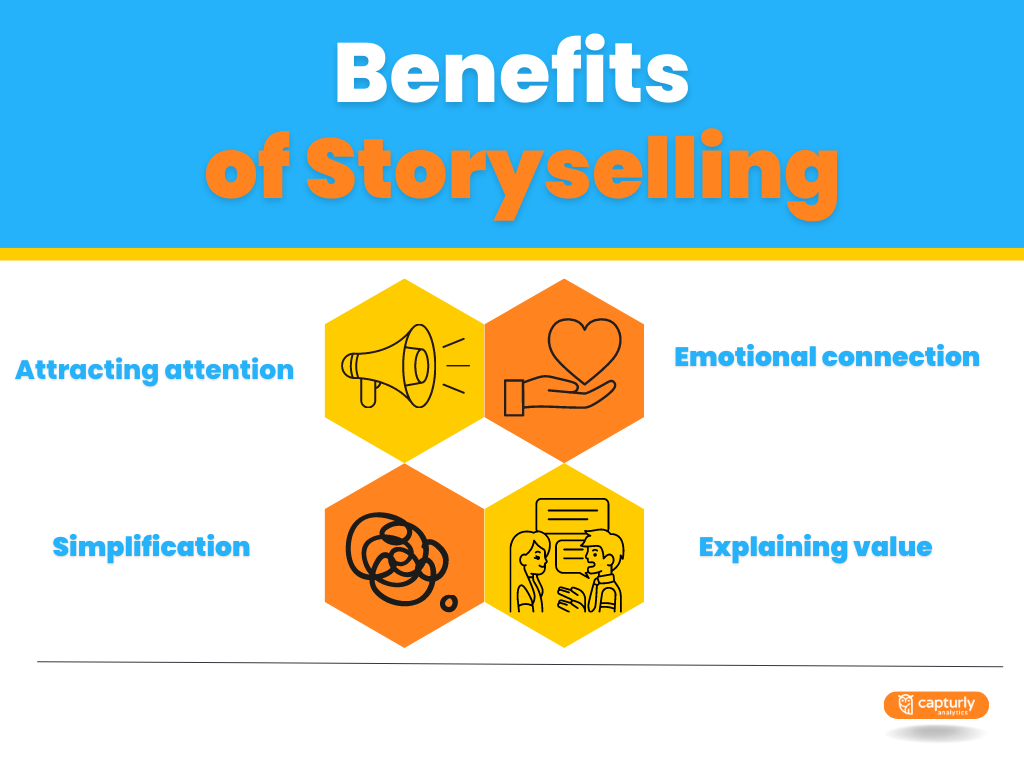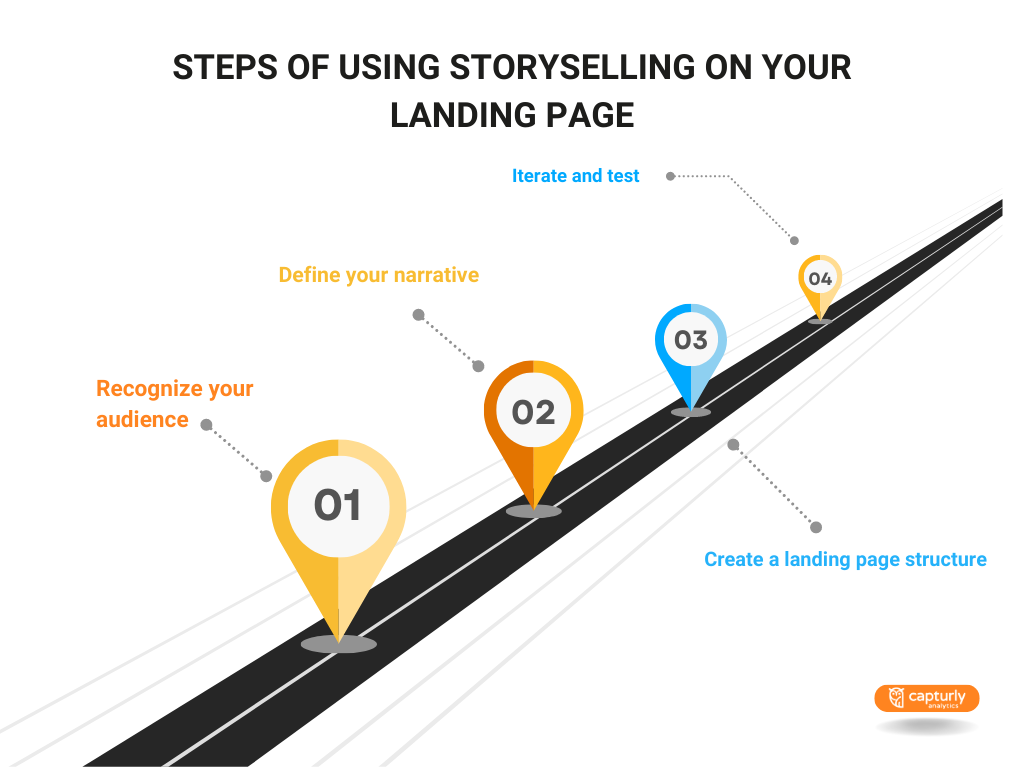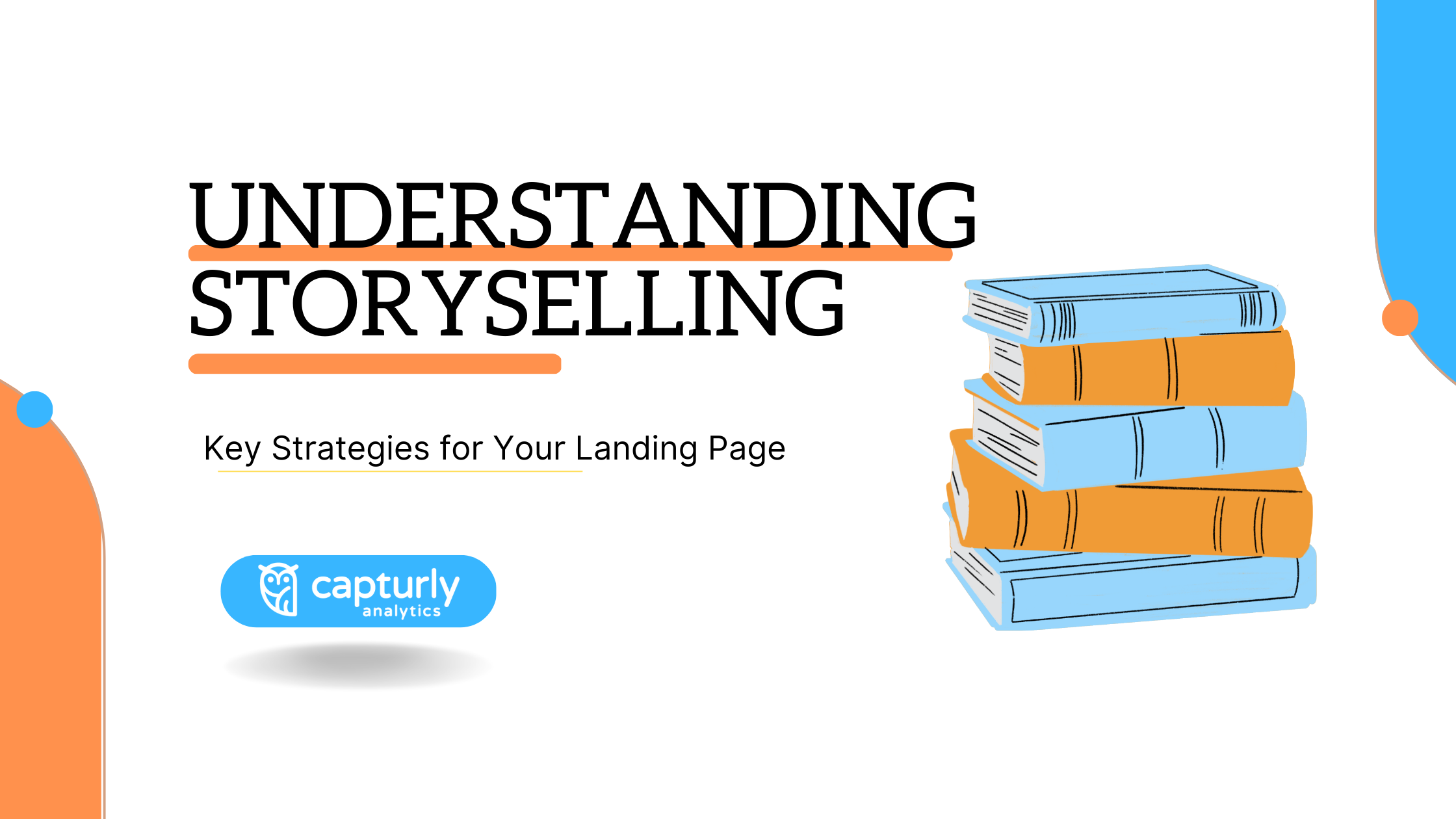As a business owner, you are aware of how difficult it can be to turn website visitors into paying clients. Storyselling is one tactic that can significantly increase your landing page’s efficiency.
In this piece, we’ll define what storyselling truly means, go through its advantages, and offer helpful advice on how to apply it to your landing page.
Table of Contents
Your new sales technique on your Landing Page: Storyselling.
A marketing strategy called “storyselling” uses a narrative to promote a good or service. It develops a narrative that interests the audience emotionally and intellectually rather than simply listing features and benefits. It is based on the idea that people first use rationality to support emotionally driven decisions before doing the opposite.
You can elicit an emotional response from your audience by delivering a tale that appeals to them, which may then motivate them to take action. A potent marketing strategy, storyselling can help you stand out from the competition, boost conversions, and build a loyal customer base.
Benefits of storyselling on a landing page
If you’re already familiar with the term storyselling, why not make the most out of it and use it in places on your webpage where you can really benefit from it, such as on your landing page?

There are a number of advantages to using storyselling on your landing page, including:
Attracting Attention
People are inundated with information in the modern world from all sides. You can use storyselling to stand out from the crowd and draw in your audience. You can capture their attention and compel them to want to learn more by delivering a fascinating narrative.
Building an Emotional Connection
Your brand and your audience can develop an emotional bond through the use of storyselling. You can develop trust and loyalty in others by tuning into their emotions, and this can result in lasting partnerships.
Simplification
Storyselling can help you to simplify complex concepts and make them more understandable to your audience. Without overloading them with technical language, you may assist your audience see the value of your product or service by providing information in a narrative fashion.
Explaining Value
Storyselling may explain the benefits of your good or service in a way that appeals to your target market. You can raise the perceived value of what you have to offer by demonstrating how your good or service addresses a need or an issue.
Impact of Storyselling on Conversion Rate
Let’s look at how storyselling on your landing page can increase your conversion rate now that we’ve established its advantages. Here’s an illustration:

Consider yourself the CEO of a firm that has created a new time-tracking tool for independent contractors. Your app’s features and advantages are detailed on a landing page you’ve designed, but you’re not seeing the kind of conversions you were hoping for. In an effort to emotionally connect with your audience, you choose to try storyselling.
You develop a story about a freelancer named Sarah who has trouble keeping track of her billable hours. You talk about her aggravation at realizing she’s been undercharging her customers and her worry at trying to figure out her taxes at the end of the year. Next, you provide your app to her as a remedy for her issues. You talk about how simple it is to use, how much time it saves her, and how confident she feels charging what she’s worth.
You’ve engaged your viewers on an emotional level by sharing Sarah’s tale. Readers of your landing page who are freelancers can identify with Sarah’s challenges and put themselves in her position. They feel valued and appreciated, and they can understand how your software may assist them in finding solutions to their own issues. This emotional connection may make the difference between a visitor leaving your website without making a purchase and a visitor turning into a client.
Storyselling: How to Use It on Your Landing Page
Let’s look at storyselling’s practical use now that we’ve seen how it can increase conversion rates.

Here are some helpful pointers:
Recognize Your Audience
You must understand your audience in order to craft a story that will appeal to them on an emotional level. Data on your target audience’s demographics, psychographics, behavior, and preferences must be gathered in order to do this.
Capturly’s web analytics tool is one method of collecting this information. Capturly can give you information about how your audience uses your website, including the traffic sources, pages they visit, how long they stay there, and the conversion rate. You can learn more about the needs and interests of your audience by studying this data to find patterns and trends.
Surveys, interviews, and focus groups are additional methods to learn more about your audience. You can collect qualitative data using these techniques about the problems, obstacles, and goals of your target audience.
If you’re selling a fitness product, for instance, you could perform a survey to find out your target market’s top fitness obstacles, what inspires them to work out, and what kinds of workouts they love. You may write a story that is more specialized and speaks directly to the needs and interests of your audience by obtaining this kind of information.
Define Your Narrative
It’s time to define your tale once you’ve acquired information about your audience. Your tale must be credible, current, and engaging. It should be based on the values, vision, and mission of your brand. To pique the interest and stimulate the intelligence of your audience, use storytelling components like characters, plot, conflict, and resolution.
Let’s take the scenario where you are selling skincare products. How your product can change your audience’s skin from lifeless and drab to glowing and beautiful might be the basis of your story. You may make a fictional person who embodies your target market and is experiencing skin issues and seeking help. You may create tension by having your character worry about her skin before a significant occasion for which she wants to look her best.
Finally, by altering your character’s skin and providing her with the self-assurance she needs to perform at her event, you can demonstrate how your product might provide a resolution to this dilemma.
Create a Landing Page Structure
You must set up your landing page so that it follows the narrative arc of your story in order to use storyselling. Create a visual hierarchy that directs your audience’s attention using headlines, subheadings, photos, and videos. After you’ve established an emotional bond with your audience, strategically place your call to action.
Let’s take the scenario where you are marketing a travel package. The following structure could be used for your landing page:
‘Escape to Paradise: The Ultimate Tropical Adventure’ is the headline.
‘Explore a world of adventure, sand, and sunshine on this tropical escape’ is the subtitle.
Picture: A stunning tropical beach

Introduction: ‘Are you prepared to leave the daily grind behind and explore a world of adventure, sand, and sun? For those looking for relaxation and excitement, our tropical retreat is the ideal getaway.’
Introduce a character, such as a stressed-out professional who wants to spend some time in nature as a respite from work.
Conflict: Explain the character’s conflict, which may include feeling exhausted and cut off from their loved ones.
Resolution: Describe how your trip package can help the character resolve this conflict by providing an enjoyable getaway that allows them to rekindle their relationship with themselves and their loved ones.
“Book now and begin your journey to paradise!” is the call to action.
Iterate and test
Storyselling needs testing and iteration in order to be successful, just like any other marketing tactic. Compare the effectiveness of several landing page variations with A/B testing. Track your conversion rate, bounce rate, and engagement rate with your site analytics. Use the information you learn to enhance your storyselling approach and boost your performance.
The following advice will help you test and improve your storyselling approach:
- Try various narratives: Test out various iterations of your brand story to determine which one connects with your audience the most. See which characters, problems, and resolves elicit the strongest feelings in the audience.
- Test various visuals: See which ones draw your audience’s attention and direct it toward your call to action by experimenting with various photos, videos, and designs.
- Try several call to actions: Try experimenting with the wording, positioning, and design of your call to action. Track which one performs the best and refine it as necessary.
- Follow up on your analytics: Track your conversion rate, bounce rate, and engagement rate with web analytics tools like Google Analytics. Analyze the information to find opportunities to strengthen your storyselling approach.
To wrap up the entire article, here’s another storyselling example
Consider that you run a business that sells green cleaning supplies. Customers who care about the environment and are looking for safe and efficient cleaning products that don’t hurt the environment are your target market. Your new line of cleaning products has a landing page, but it’s not generating the conversions you were looking for.
You choose to develop a narrative that matches the beliefs and goals of your target audience in order to use storyselling on your landing page.
Title
The first title is:
“Clean Your House, Preserve Your Planet: The Tale of Our Eco-Friendly Cleaning Products,”
This grabs their attention right away. This headline provides context for the narrative you’re about to present.
Character and conflict
Then you introduce the main character of your novel, a working woman who is worried about the environment and the health and safety of her family. You talk about the difficulties she has in locating cleaning supplies that are efficient, reasonably priced, and environmentally friendly. You portray her sadness and aggravation as she tries product after product but discovers that they either don’t work or contain dangerous substances.
Resolution
Then you present your company as the answer to her problem. You talk about how your goods are manufactured using natural materials, secure for use around people and the environment, and effective. You demonstrate how your brand is compatible with the goals and values of your target market and how it can improve both their quality of life and the environment.
After you’ve established an emotional bond with your audience, you strategically place your call to action. You offer them a special discount on their first purchase as an incentive to try your items and join your mission. In order to increase credibility and trust, you also offer social proof in the form of customer reviews and ratings.

Through the use of storyselling you’ve established an emotional connection with your target audience on your landing page that goes beyond the details and advantages of your items. You have also demonstrated to them that you share their beliefs and objectives and that you are aware of their struggles. You’ve set your brand apart from those of your rivals and generated interest and urgency around your offer.
You’ve improved customer loyalty and conversion rate as a result. Your target market views your brand as a companion on their path to a better and more environmentally friendly lifestyle rather than merely a supplier of goods. You’ve been able to leverage storytelling’s emotional impact to further your professional objectives through storyselling.
Summary
The efficiency of your landing page can be considerably increased by using the popular marketing strategy known as “storyselling.” You can set your business apart from the competition, boost conversions, and cultivate a devoted following by employing storyselling to evoke an emotional response in your audience. You must understand your target, design your story, organize your landing page, test, and iterate in order to implement storyselling successfully. With the help of these suggestions, you may improve your landing page and reach your conversion objectives.
Don't forget, sharing is caring! :)

